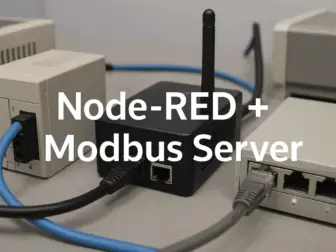Tag - IoT Gateway
Blog, IoT Protocols and Interoperability , November 25, 2025 , Data Acquisition, Edge Computing, Industrial IoT, IoT Gateway, Modbus TCP, MQTT, Node-RED
Blog, Edge Computing and Data Analytics , September 28, 2025 , BLE, ESP32, IoT Bridge, IoT Gateway, IR, LoRa, MQTT, OpenMQTTGateway, RF, smart Home
Blog , June 6, 2024 , AI Gateway, AI in IoT, Cloud Computing, Cloud-Edge Collaborative Gateway, CoAP, Data Acquisition Gateway, Data Transmission, Edge Computing, Edge Computing Gateway, Industrial IoT, IoT Applications, IoT Gateway, IoT Gateway Selection, Real-time Data Processing, Smart Gateway, Smart Traffic
The Role of IoT Gateway in Connecting Devices and Systems
IoT Gateway plays a crucial role in the Internet of Things (IoT) ecosystem by serving as a bridge between devices and systems. It acts as a communication hub that enables devices to connect to the cloud, collect data, and exchange information with other devices. By acting as a translator and protocol converter, IoT Gateway ensures seamless communication between devices that use different communication protocols and standards.
One of the key functions of an IoT Gateway is to aggregate and pre-process data from connected devices before sending it to the cloud. This helps in reducing the amount of data transmitted over the network, optimizing bandwidth usage, and improving overall system efficiency. IoT Gateway also plays a vital role in ensuring data security and privacy by encrypting data before transmitting it to the cloud.
IoT Gateway supports various communication protocols such as Wi-Fi, Bluetooth, Zigbee, Z-Wave, and Ethernet, making it compatible with a wide range of devices. It can also run edge computing applications, allowing for real-time data processing and decision-making at the edge of the network. This reduces latency and improves the overall performance of IoT systems.
In industrial IoT applications, IoT Gateway plays a critical role in connecting legacy systems and equipment to modern IoT networks. By retrofitting existing devices with IoT Gateway, businesses can digitize their operations, monitor equipment health, and optimize maintenance schedules. IoT Gateway also enables predictive maintenance by analyzing data from sensors and predicting potential equipment failures before they occur.
In smart home applications, IoT Gateway acts as a centralized control hub for smart devices such as thermostats, lights, security cameras, and door locks. It allows users to monitor and control their devices remotely through a mobile app or web interface. IoT Gateway can also enable automation and smart routines, such as turning off lights when no one is in the room or adjusting the thermostat based on occupancy patterns.
Overall, IoT Gateway plays a crucial role in enabling seamless connectivity, data aggregation, and interoperability in the IoT ecosystem. It acts as a bridge between devices, systems, and the cloud, facilitating efficient data exchange and communication. As the IoT ecosystem continues to grow and evolve, IoT Gateway will play an increasingly important role in enabling new use cases and applications across industries.


